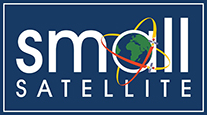Session
Technical Session IX: Student Competition
Abstract
As satellite missions become increasingly complex, a need for accurate determination and control systems using low cost hardware arises. This is especially true for university satellite programs such as the University of Missouri - Rolla satellite design team, or UMR SAT. With limited resources, mission success relies on creative and innovative hardware and software designs. This paper describes the development of control algorithms that will be used onboard the UMR SAT satellite pair. Using novel attitude and orbit control techniques and magnetometer-only attitude determination, the mission can be accomplished with low cost COTS hardware. The UMR developed θ-D controller will be used to facilitate the attitude and formation control, and the θ-D filter will be used for orbit determination. The θ-D technique has been successfully applied to a wide variety of applications ranging from wing aeroelastic flutter suppression to hit-to-kill missile autopilot design to reusable launch vehicle control. The results of each application have been very promising and show the potential improvement over pre-existing control techniques offered by the θ-D method. Along with software development, this paper also provides high fidelity simulations of the determination and control system are presented to demonstrate the effectiveness of the algorithms.
Presentation Slides
Orbit/Attitude Determination and Control for the UMR SAT Mission
As satellite missions become increasingly complex, a need for accurate determination and control systems using low cost hardware arises. This is especially true for university satellite programs such as the University of Missouri - Rolla satellite design team, or UMR SAT. With limited resources, mission success relies on creative and innovative hardware and software designs. This paper describes the development of control algorithms that will be used onboard the UMR SAT satellite pair. Using novel attitude and orbit control techniques and magnetometer-only attitude determination, the mission can be accomplished with low cost COTS hardware. The UMR developed θ-D controller will be used to facilitate the attitude and formation control, and the θ-D filter will be used for orbit determination. The θ-D technique has been successfully applied to a wide variety of applications ranging from wing aeroelastic flutter suppression to hit-to-kill missile autopilot design to reusable launch vehicle control. The results of each application have been very promising and show the potential improvement over pre-existing control techniques offered by the θ-D method. Along with software development, this paper also provides high fidelity simulations of the determination and control system are presented to demonstrate the effectiveness of the algorithms.


